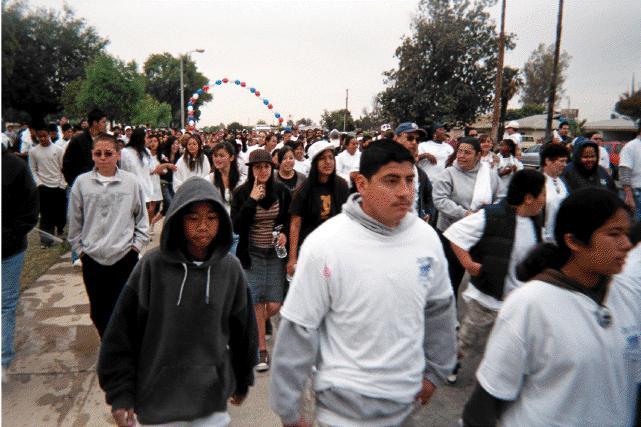City of Delano Engages Residents in Healthy Planning
Community: City of Delano (Kern County)
Population: 52,802 (2009)
Summary
The fast growing City of Delano is collaborating with community partners to successfully engage a cross section of residents in the General Plan Update process, with a particular emphasis on public health and safety.
Recognizing the impacts of the built environment on public health, the city council voted in 2010 to add a Health and Wellness Element when updating Delano’s General Plan. The city is using a combination of in-depth public dialog and brief surveys and exercises in order to allow people with different levels of interest and time available to participate in developing healthy planning strategies. City officials have found that focusing on how youth are affected by planning decisions is one effective way to engage a large cross section of the community in considering how future development could combat obesity and give residents more opportunity to walk, bike, and eat fresh healthy foods.
City staff are considering input collected from community members as they craft a General Plan for council to consider. One staff member reports that more residents are volunteering with the city in response to recent outreach and engagement efforts, but significant staff time is still necessary to successfully engage diverse residents in considering healthy planning options.
Process Highlights and Results
- City staff worked with a local nonprofit community based organization serving low income residents to help tailor outreach and messaging and to design ways to engage diverse people in a way that was welcoming, relevant, and accessible.
- An annual city walk attracts hundreds of residents and gives city officials valuable data about where and why people walk and bike in the community and what their priorities are related to healthy planning.
- Residents can weigh in on what they want to see included in the Health and Wellness element of the general plan through facilitated half day workshops or through brief surveys and exercises administered by city staff and volunteers at street fairs, parades, and other community events.
- A “PhotoVoice” participatory action research project involved distributing 150 disposable cameras (donated by the city attorney) to Delano students. The youth were asked to make posters with their photos depicting things they considered healthy and unhealthy in the community. The posters were displayed in local banks and other businesses, and got many residents thinking and talking about healthy community planning.
- A “Plan Van” staffed by planning students at Cal Poly San Luis Obispo engaged residents in both Spanish and English at local store parking lots in order to get input from residents who are too busy to attend public workshops and those who might be intimidated to speak in public.
- Bilingual and bicultural city staff and volunteers who speak Spanish and Tagalog allow city planners to engage members of the community with limited English skills.
- An art contest challenged Delano youth to submit their visions of how the city could be improved by 2020 or 2030. These visionary renderings will be included in the city’s General Plan.
- City officials report that more students are walking and biking to school already as a result of their efforts. The high school installed more bike racks recently to accommodate this healthy trend.
1,500 Delano residents participating in the first annual City Walk.
Lessons Learned
- Personal invitations from trusted community based organizations were much more effective than mailing or posting fliers when seeking to interest more than the, “usual suspects” in planning meetings and exercises.
- Look for partnerships with local organizations who can help with outreach to their members or clients, provide space or food for public meetings, or who are organizing community events that present an opportunity to engage residents. It is important to clearly convey to each partner organization how a robust public planning process could help them achieve organizational goals. “It takes time to build partnerships, you need to be resourceful and persevere, but it results in much better outcomes when community partners like schools and the chamber of commerce get involved,” says Community Development Director Keith Woodcock.
- A multi-faceted engagement process with both opportunities for people to weigh in through in-depth dialogs and through less time consuming individual exercises allows planners to get the breadth and depth of input necessary to develop plans that reflect community values.
- Using visualization technologies such as renderings of an area before and after potential improvements and GIS maps with data overlays can help residents better understand how the built environment affects public health and make well informed decisions about what changes they would like to see in their community.
- Managing traffic flow in order to make a community more pedestrian and bike friendly can have multiple co-benefits. Reducing traffic flow improves the safety of pedestrians and bikers, reduces vehicle miles traveled and greenhouse gas emissions, and also can result in significant savings on building roads since fewer lanes are needed. For instance, Delano plans to spend $1 million less to renovate a main thoroughfare incorporating healthy planning principals that it would have under the original plan. This savings is passed on to potential developers through reduced development impact fees, making the city a more attractive place for new construction projects that can further contribute to the local economy.
Resources to Learn More
- “Understanding the Basics of Land Use and Planning: A Guide to Planning Healthy Neighborhoods” is available for free download from the Institute for Local Government to assist local officials with health issues related to the built environment. Available at: http://www.ca-ilg.org/healthyneighborhoodsguide
- A PowerPoint presentation about how GIS technology is being used in planning to analyze conditions and educate residents about the relationship between community health and the built environment is available at: http://apha.confex.com/apha/138am/webprogram/Paper227266.html


